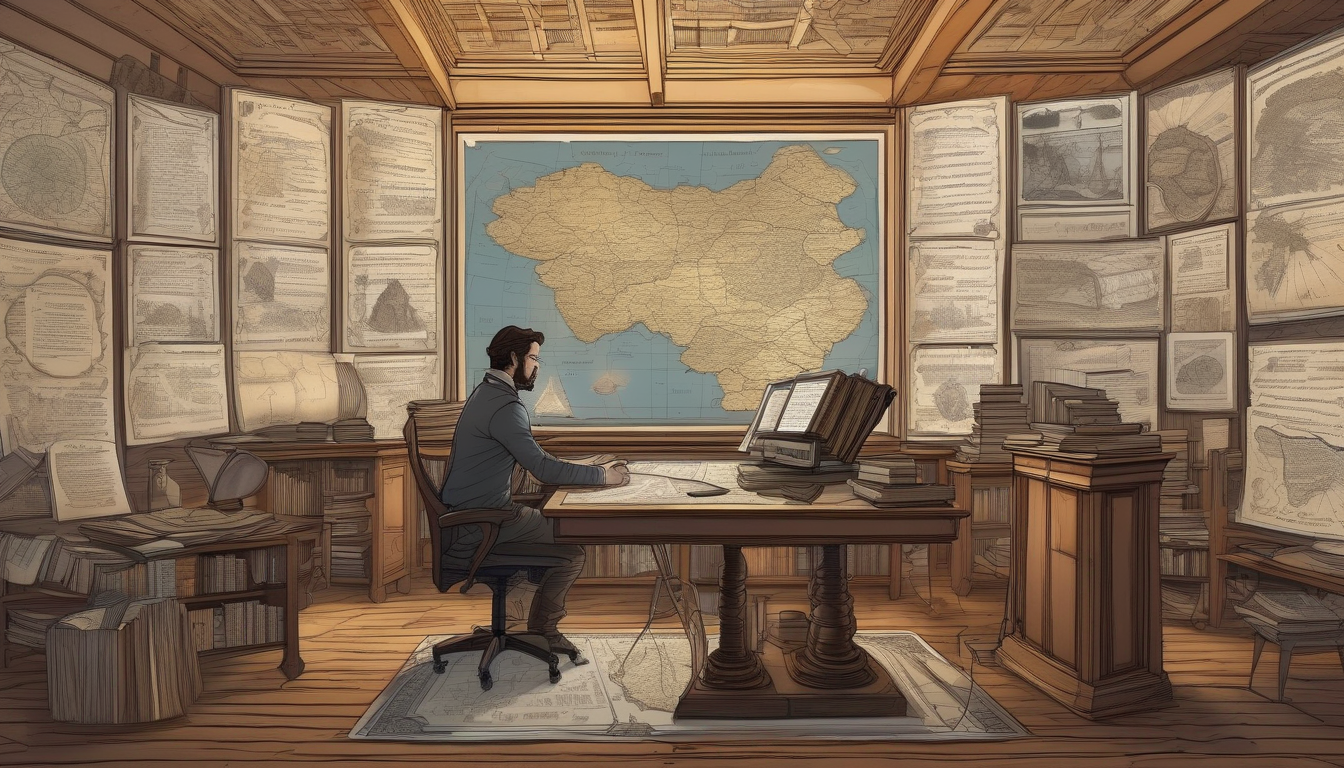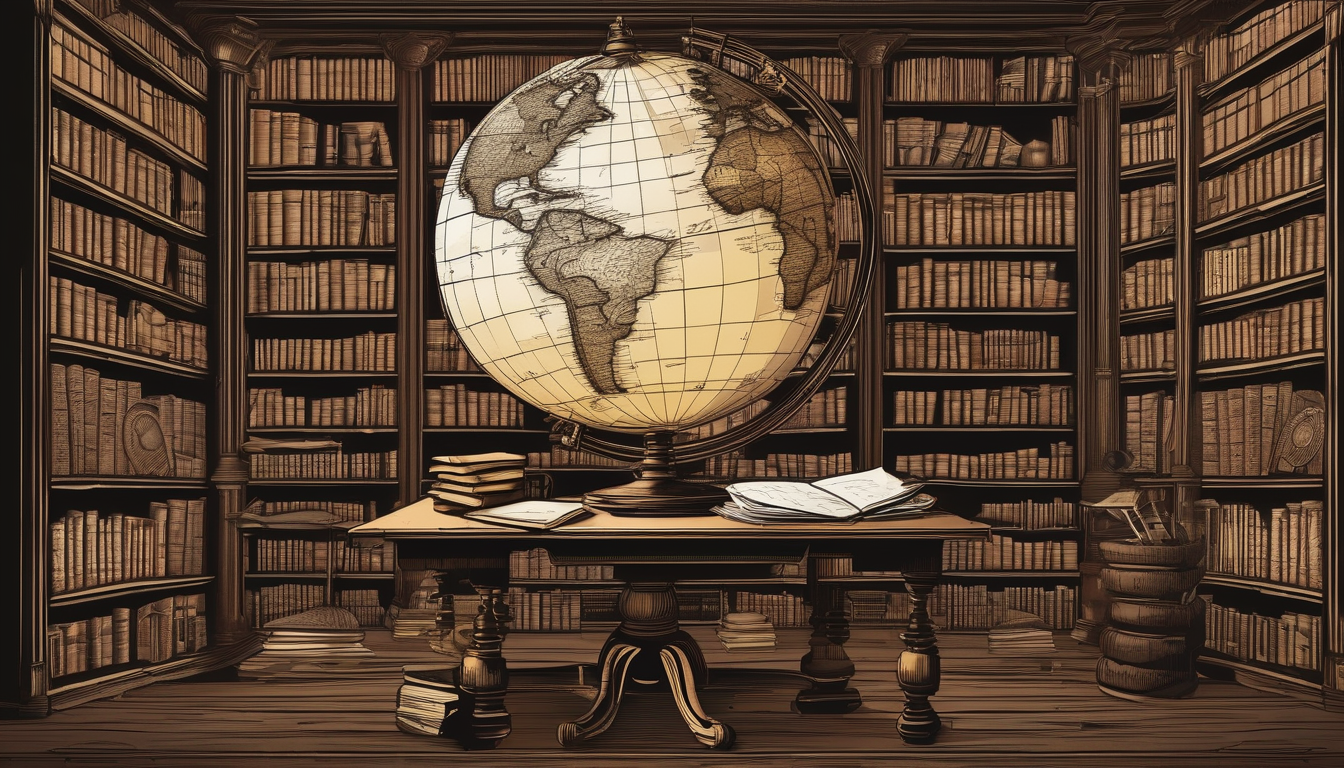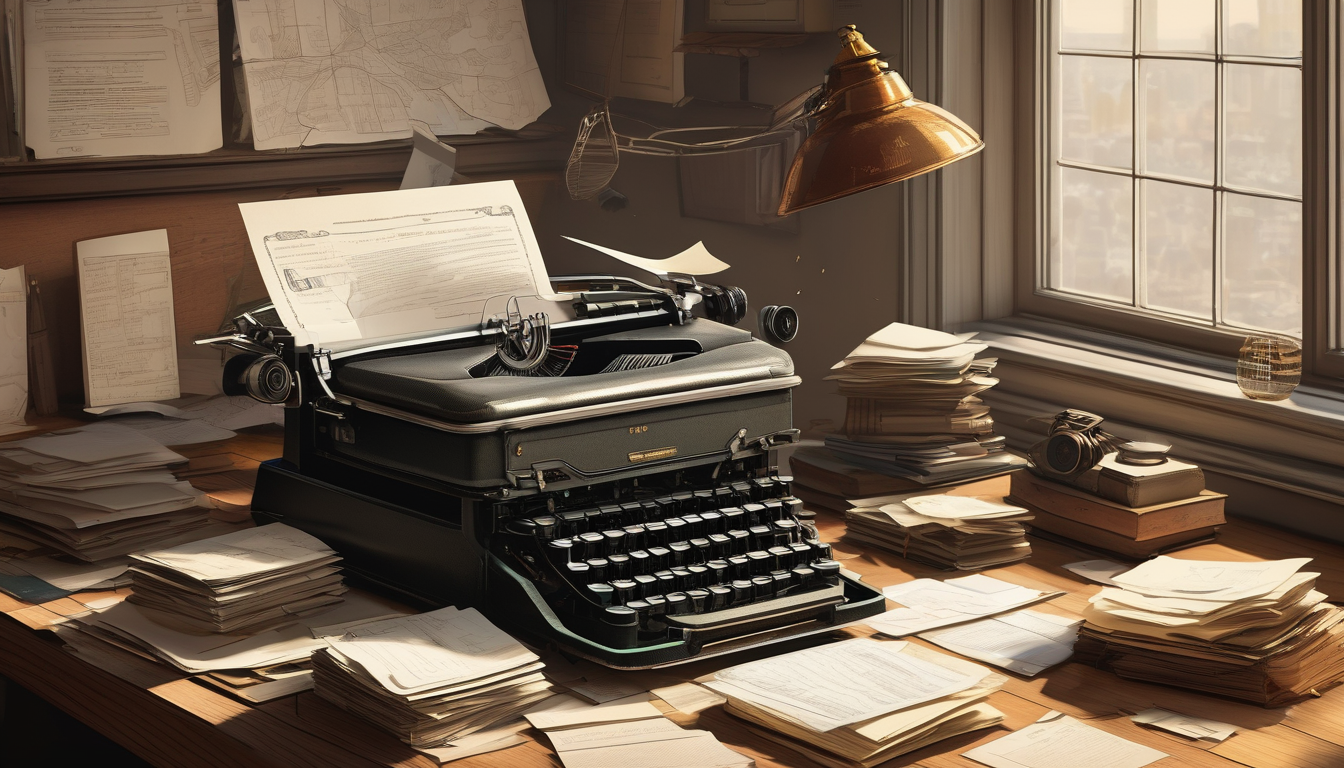In a world where the past shapes our present and future, the question arises: can artificial intelligence truly unveil the hidden narratives of history? This exploration delves into the remarkable potential of AI to sift through mountains of data, revealing stories that have long been buried beneath the sands of time. Imagine AI as a digital detective, tirelessly scouring archives, documents, and artifacts, piecing together a puzzle that even the most seasoned historians might overlook.
AI technologies are not just tools; they are revolutionizing the way we approach historical research. By harnessing machine learning algorithms, researchers can analyze vast datasets in a fraction of the time it would take a human. This capability allows for the identification of patterns and connections that might otherwise remain hidden. For instance, AI can compare texts from different eras, uncovering influences and trends that help us understand the evolution of thought and culture. It’s like having a supercharged magnifying glass that reveals the intricate details of our shared past.
However, this journey into the depths of history is not without its challenges. While AI offers unprecedented insights, it also grapples with issues such as data bias and the need for human oversight. After all, AI is only as good as the data it processes, and if that data is skewed, the outcomes can be misleading. Thus, historians must remain vigilant, ensuring that the narratives constructed by AI are accurate and contextualized.
As we stand on the brink of a new era in historical inquiry, the integration of AI with traditional methods could lead to exciting discoveries. By combining the analytical prowess of AI with the nuanced understanding of human historians, we can enhance our grasp of history’s complexities. The future is bright, and the potential for AI to uncover hidden truths about our past is not just a possibility; it’s an unfolding reality.

The Role of AI in Historical Research
Artificial Intelligence is not just a buzzword; it’s a game changer in the field of historical research. Imagine having the ability to sift through mountains of data in a matter of seconds—sounds like something out of a sci-fi movie, right? But this is precisely what AI brings to the table. By analyzing vast data sets, AI can identify patterns and connections that traditional research methods might miss. This capability allows historians to explore narratives that were previously overlooked, leading to a more nuanced understanding of our past.
For instance, AI algorithms can quickly process and analyze digitized archives, books, and articles, revealing hidden relationships between events, people, and cultures. This not only enriches our historical narratives but also opens up new avenues for inquiry. Think of AI as a detective with a magnifying glass, zooming in on the details that matter most. It helps historians ask deeper questions and pursue lines of research that might have seemed too daunting or time-consuming before.
Moreover, AI tools can assist in transcribing and translating historical documents, making them more accessible to researchers and the public alike. For example, machine learning techniques can enhance the accuracy of transcriptions of handwritten manuscripts, which are notoriously difficult to decipher. This means that valuable historical insights locked away in dusty archives can finally see the light of day, allowing a wider audience to engage with our shared history.
However, while AI is a powerful ally, it’s crucial to remember that it’s not infallible. The effectiveness of AI in historical research is contingent upon the quality of the data fed into it. If the data is biased or incomplete, the conclusions drawn can be misleading. Therefore, historians must work hand-in-hand with AI, ensuring that human oversight is always part of the equation. In this way, AI becomes a tool that enhances human intuition and expertise rather than replacing it.

Challenges in AI Historical Analysis
While the potential of artificial intelligence in historical analysis is undoubtedly exciting, it is not without its challenges. One of the primary issues is data bias. AI systems learn from the data they are trained on, and if that data is skewed or incomplete, the insights generated can be misleading. For example, if an AI is trained predominantly on documents from a particular perspective or demographic, it may overlook significant events or contributions from marginalized groups, leading to a skewed understanding of history.
Another challenge lies in the interpretation of data. Historical context is crucial for understanding events, yet AI may lack the nuanced comprehension that human historians possess. This can result in misinterpretations that oversimplify complex narratives. For instance, an AI might identify patterns in historical events but fail to grasp the socio-political nuances behind those patterns, which could lead to erroneous conclusions.
Moreover, the need for human oversight cannot be overstated. While AI can process vast amounts of information quickly, the interpretation of that information still requires the expertise of historians. Without this oversight, there is a risk that AI-generated findings could be accepted uncritically, potentially perpetuating inaccuracies. To address these challenges, a collaborative approach is essential, where AI tools are used to supplement human research rather than replace it.
Additionally, ethical concerns surrounding data privacy and the potential for misuse of AI technology in historical research present further hurdles. Researchers must navigate the delicate balance between leveraging AI for insightful analysis and ensuring that the data used respects the privacy and rights of individuals and communities. As we delve deeper into the integration of AI in history, these challenges remind us of the importance of maintaining a critical eye and a responsible approach to our exploration of the past.

Case Studies of AI in History
Artificial intelligence is not just a buzzword; it’s a powerful tool that’s reshaping our understanding of history. Let’s dive into some compelling case studies that illustrate how AI has been instrumental in uncovering lost narratives and reinterpreting significant historical events. For instance, researchers have employed machine learning algorithms to analyze vast archives of documents, which would take humans years to sift through. One notable example is the use of AI to decode ancient manuscripts that have remained unreadable for centuries. By utilizing pattern recognition, AI can identify language structures and provide translations, opening doors to previously inaccessible knowledge.
Another fascinating case is the analysis of historical texts and images to reveal biases in how history has been documented. AI tools have been developed to scan through thousands of newspaper articles from different eras, highlighting how certain events were portrayed differently based on the media outlet. This not only uncovers hidden truths but also challenges the narratives we’ve long accepted. A recent project focused on World War II propaganda has shown how AI can analyze sentiment and language use to understand the underlying motives of historical narratives.
To illustrate these points, consider the following table that summarizes key case studies:
| Case Study | Description | Outcome |
|---|---|---|
| Decoding Ancient Manuscripts | AI algorithms used to translate unreadable texts. | Uncovered lost knowledge from ancient civilizations. |
| Analyzing Historical Newspapers | AI scans articles to reveal bias in historical narratives. | Challenged long-accepted historical accounts. |
| World War II Propaganda Analysis | Sentiment analysis of wartime media. | Provided insights into the motivations behind propaganda. |
These case studies not only showcase the capabilities of AI but also highlight its potential to revolutionize historical inquiry. By integrating AI into historical research, we can uncover layers of history that were previously hidden, providing a more nuanced understanding of our past. The future of history is not just about what happened; it’s about how we interpret and understand those events through the lens of technology.

Ethical Considerations in AI-Driven History
As we venture into the uncharted waters of AI’s involvement in historical research, it’s crucial to pause and consider the ethical implications that accompany this technological revolution. With great power comes great responsibility, and the deployment of AI in history is no exception. One of the most pressing concerns is the issue of authorship. When a machine processes historical data and generates insights or narratives, who gets the credit? Is it the programmer, the AI itself, or the historians who guide its learning? This question is not just academic; it has real-world implications for scholarship and intellectual property.
Furthermore, data privacy is another significant concern. Historical records often contain sensitive information, and the use of AI to analyze these records could inadvertently expose personal details that should remain confidential. As we integrate AI into our historical inquiries, we must ensure that we protect individuals’ rights and maintain the integrity of the data we handle.
Moreover, the potential for misuse of AI-generated findings cannot be overlooked. Just like any powerful tool, AI can be wielded for both good and ill. There is a risk that biased algorithms may perpetuate existing narratives or create new ones that distort historical truths. To mitigate this, it’s essential to establish guidelines that promote responsible practices in historical inquiry.
To navigate these ethical waters, a collaborative approach is necessary. Historians, ethicists, and technologists should work together to create a framework that addresses these challenges. By doing so, we can harness the power of AI while safeguarding the integrity of our historical narratives. This collaboration will ensure that the stories we uncover are not only accurate but also respectful of the individuals and communities they represent.

The Future of AI and Historical Inquiry
As we gaze into the horizon of historical inquiry, the role of artificial intelligence is set to transform the landscape in ways we can only begin to imagine. Picture this: a world where historians are equipped with powerful AI tools that can sift through mountains of data in mere seconds, revealing hidden narratives that have long been buried under the sands of time. This isn’t just a dream; it’s the future unfolding before our eyes.
AI’s potential to enhance our understanding of history is immense. By employing machine learning algorithms, researchers can analyze patterns and correlations in historical data that would take humans years to uncover. For instance, imagine using AI to cross-reference thousands of letters, diaries, and documents from a specific era, allowing historians to piece together a more comprehensive picture of societal dynamics during that time. The possibilities are as vast as the ocean!
However, this future isn’t without its challenges. As we embrace AI, we must also be cautious of its limitations. Data bias and historical inaccuracies can skew interpretations, leading to a distorted understanding of our past. Therefore, a collaborative approach is essential—one that marries the analytical prowess of AI with the critical thinking and contextual knowledge of human historians. This synergy can create a more nuanced and accurate portrayal of history.
Moreover, as we look ahead, it’s crucial to consider the ethical implications of AI in historical research. Questions surrounding data privacy, authorship, and the potential for misuse loom large. Ensuring that AI is used responsibly will be key to maintaining the integrity of historical inquiry.
In conclusion, the future of AI in historical inquiry is bright but complex. As we stand on the brink of this new era, it’s clear that embracing AI will not only enhance our research capabilities but also challenge us to reflect on our ethical responsibilities. Are we ready to rewrite history with the help of AI?

Integrating AI with Traditional Historical Methods
In the ever-evolving landscape of historical research, the integration of artificial intelligence (AI) with traditional methods is not just a trend; it’s a revolution. Imagine blending the meticulousness of a historian’s research with the speed and analytical power of AI. This combination can lead to groundbreaking discoveries that reshape our understanding of history. By harnessing AI, historians can sift through mountains of data—think of it as having a supercharged assistant who never tires and can spot connections in a flash.
One of the most exciting aspects of this integration is the ability to analyze large datasets that would take human researchers years to comb through. For instance, AI can help identify patterns in historical documents, revealing trends that might not be immediately obvious. This means that historians can focus more on interpretation and context, rather than getting bogged down in the minutiae of data collection. It’s like having a high-tech magnifying glass that highlights the most important details in a sea of information.
However, it’s essential to remember that while AI can enhance research, it shouldn’t replace the human touch. The nuances of historical context, cultural significance, and emotional depth are best understood by human historians. Therefore, a collaborative approach is vital. By combining AI’s analytical capabilities with the critical thinking and interpretative skills of historians, we can create a more comprehensive view of our past.
To illustrate this point, consider the following table that highlights the strengths of both AI and traditional methods:
| Method | Strengths |
|---|---|
| AI |
|
| Traditional Methods |
|
In conclusion, integrating AI with traditional historical methods offers a pathway to uncovering hidden narratives and enriching our understanding of the past. As we move forward, embracing this synergy will ensure that we not only preserve history but also enhance it through innovative technologies.
Frequently Asked Questions
- How is AI changing historical research?
AI is revolutionizing historical research by sifting through massive data sets to find patterns and connections that traditional methods might miss. Imagine having a super-smart assistant that can quickly analyze years of documents and highlight significant trends or overlooked narratives!
- What challenges does AI face in historical analysis?
Despite its amazing potential, AI isn’t perfect. It can struggle with data bias and interpretation issues, which is why human oversight is crucial. Think of it like a GPS; it’s great for getting directions, but you still need to know where you’re going to avoid getting lost!
- Can you give examples of AI in history?
Absolutely! There are fascinating case studies where AI has helped historians uncover lost documents or reinterpret major events. It’s like finding a hidden treasure chest filled with insights that change how we view our past!
- What are the ethical concerns with AI in history?
Using AI in historical research raises important ethical questions, such as issues of authorship and data privacy. It’s essential to approach these technologies responsibly to ensure that we respect the integrity of historical inquiry.
- What does the future hold for AI and historical inquiry?
As AI technology advances, its role in historical research will likely expand. We can expect new tools and methods that will help us understand our complex past even better. It’s an exciting time for historians and tech enthusiasts alike!
- How can AI and traditional methods work together?
Combining AI with traditional historical methods can enhance research outcomes. Think of it as blending the old with the new—using technology to support rigorous scholarship while preserving the context and depth of historical analysis.


